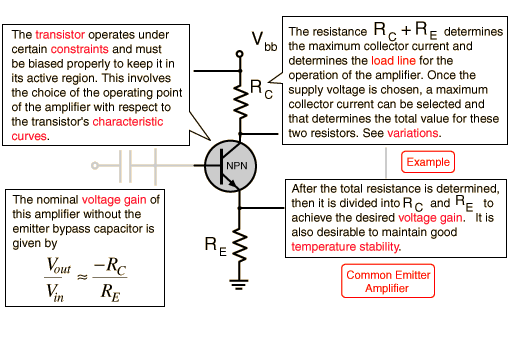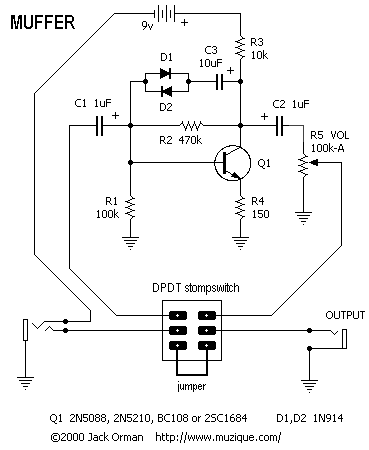Sleeper
Well-known member
Hi there.
I've been reading and studying app notes and pdf's galore and I'm still not getting how this works.
What i need to do is get a little more gain out of this fuzz circuit from an acoustic 360 bass amp. When it's switched IN and the attack and gain are maxed out I'm getting volume drop compared to when the circuit is bypassed. how do I get higher output levels from this?

my 2n1306 is vintage and obsolete so I can't get one with a higher hfe. I don't want to change it... the fuzz is very good sounding.
Oh, duh. I just spotted something. there's a voltage divider on the input. maybe changing the 22k 100k ratio on the input might do it.
Still, that's not what I was initially asking about.
I'm looking to squeeze enough level out of this that the level control is useful.
Is there a way to get more gain from transistors, in a circuit like this or is gain just based on hfe and making sure that the things are biased correctly so that the gain available is optimized for minimum (or in this case maximum) distortion.
Is this like an opamp where the 680k and 470k on q1 or the 1m on q3
are part of a feedback network like with an opamp?
I was reading about the darlington pair. maybe this would work...
as you can see, I know just enough to be dangerous, not really enough to address my problem.
Hope someone can push me in the right direction.
Kelly
I've been reading and studying app notes and pdf's galore and I'm still not getting how this works.
What i need to do is get a little more gain out of this fuzz circuit from an acoustic 360 bass amp. When it's switched IN and the attack and gain are maxed out I'm getting volume drop compared to when the circuit is bypassed. how do I get higher output levels from this?

my 2n1306 is vintage and obsolete so I can't get one with a higher hfe. I don't want to change it... the fuzz is very good sounding.
Oh, duh. I just spotted something. there's a voltage divider on the input. maybe changing the 22k 100k ratio on the input might do it.
Still, that's not what I was initially asking about.
I'm looking to squeeze enough level out of this that the level control is useful.
Is there a way to get more gain from transistors, in a circuit like this or is gain just based on hfe and making sure that the things are biased correctly so that the gain available is optimized for minimum (or in this case maximum) distortion.
Is this like an opamp where the 680k and 470k on q1 or the 1m on q3
are part of a feedback network like with an opamp?
I was reading about the darlington pair. maybe this would work...
as you can see, I know just enough to be dangerous, not really enough to address my problem.
Hope someone can push me in the right direction.
Kelly





